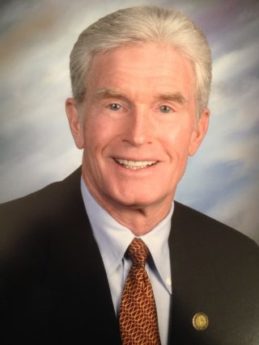HOME | ABOUT US | MEDIA KIT | CONTACT US | INQUIRE
HOME | ABOUT US | MEDIA KIT | CONTACT US | INQUIRE
Some indicators suggest that it has, but for consumers, some warning signals.
 PUBLISHED NOVEMBER 2023
PUBLISHED NOVEMBER 2023
The capital markets head into a post-FOMC meeting period with increasing confidence that the Fed has reached its terminal policy rate. Market developments painted a picture of a much cooler economy, slightly less-alarming Treasury borrowing needs, and a fading resolve from the FOMC to follow through with the one additional hike suggested by the September forecast. Treasury yields are notably lower, with 10-year Treasury yields approaching 4.50 percent after a seemingly inevitable climb towards 5 percent earlier in the week.
The new forecast grid looks like a soft landing for the economy, with GDP chugging along, inflation falling back toward the Fed’s target, gradual cuts in fed funds starting late next year, and Treasury yields receding as rates come down.
There are, however, some potential problems. For starters, the core inflation rate in the forecast is closer to 3 percent than 2.5 percent for the end of 2025. Then there is the unemployment rate, never rising to 4 percent throughout the forecast. Assuming numbers like that, it may be difficult for the Fed to stay sidelined.
Another two years before inflation falls below 3 percent is also not a scenario likely to please the FOMC. But if inflation continues to gradually drop, they should continue their wait-and-see policy. The two biggest risks to any pause are inflation breaking higher, or at least inflation expectations breaking higher. Either one would force the Fed’s hand to at least consider a rate hike.
While markets took recent data as evidence the economy had finally stopped overheating, The Street thinks reports of the death of this economic expansion are greatly exaggerated.
The October employment report was not nearly as weak as the headline numbers suggested. October payrolls grew 150,000, only 30,000 fewer than the consensus forecast of 180,000, while growth the previous two months was revised down by 100,000. The unemployment rate ticked up one-10th of a percentage point, from 3.8 percent to 3.9 percent, the highest since January 2022.
The strike by the United Auto Workers goes a long way in explaining this negative surprise vs. expectations. And a sub-4 percent unemployment rate is still below the Fed’s estimate for full employment. There appears to be no need to worry about excessive weakness, at least until after we see what a potential post-strike environment looks like in the November report.
September consumer credit data published recently mostly showed a resumption of the credit trends of the past two years. The break-adjusted level of outstanding revolving credit—credit-card debt—grew slightly after a steep August increase. Non-revolving credit also increased slightly but after a steep August decline. Most likely, because the bulk of this category is student loans, the August drop reflects a pre-emptive payoff of federal loans.
U.S. credit-card debt swelled $154 billion year over year to a record $1.08 trillion in the third quarter (according to the Federal Reserve Bank of New York)—the largest increase since it began tracking household debt in 1999.
Interestingly, Millennials saw the most credit-card delinquencies. Credit-card balances seeing this large jump were consistent with strong consumer spending and real GDP growth.
Those balances have been increasing faster than any other type of debt amid high inflation and despite record-high credit card rates, a strong indicator that more people are using credit cards just to get by. Relying on month-to-month survival utilizing credit cards is unfortunate because many consumers pay hefty interest rates (to the tune of 20 percent and higher).